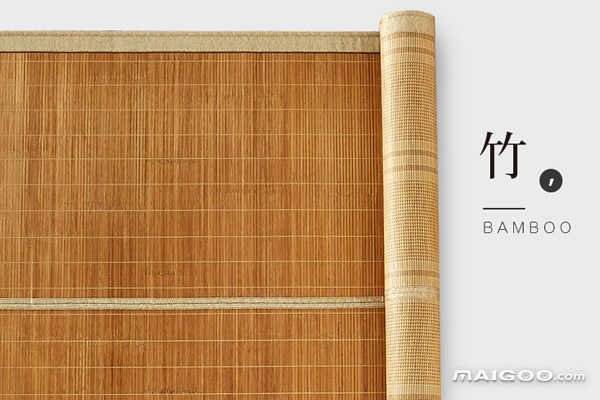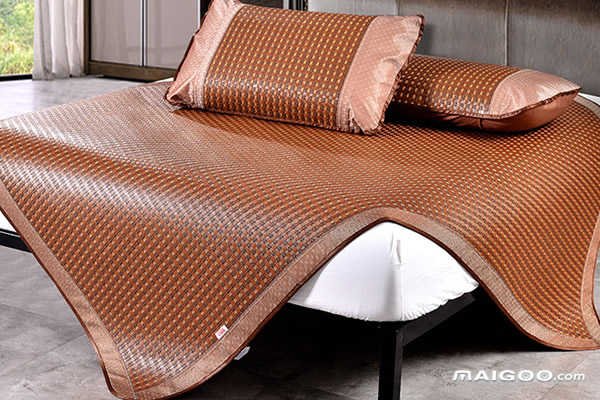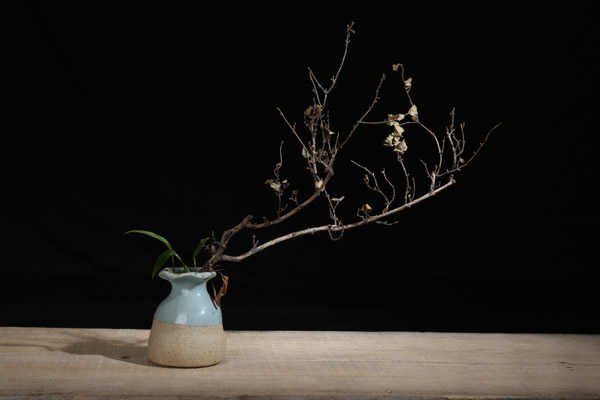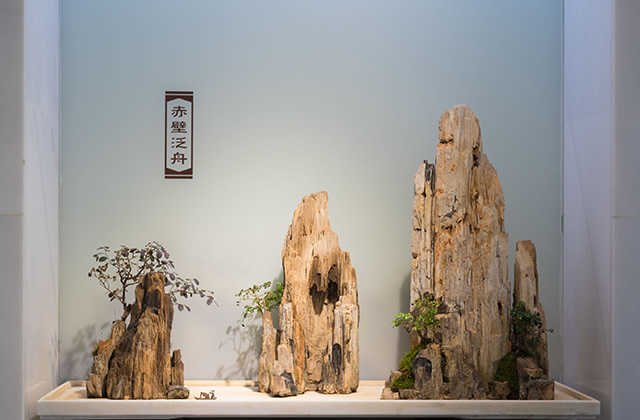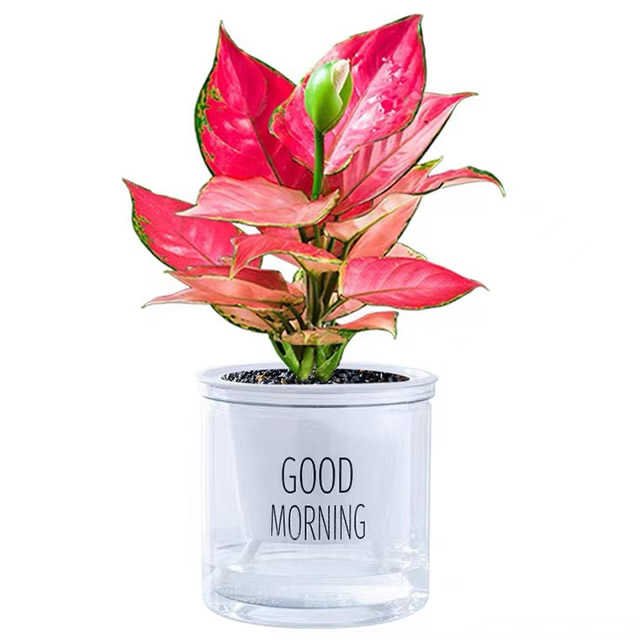Profile
One red, shrubs, cylindrical roots, many branches.Stems stand upright, 1-3 meters high, 1-4 cm in diameter, hairless.The leaves are alternate, ovate-oval, oblong or lanceolate, green, full or shallow or wave-like shallow cracks, leaf surfaces are blocked or hairless, leaf back is pillar;Big, narrow oval shape, 3-7 cm long, 1-2 cm wide, usually full, very few shallow wave-shaped split edges, vermilion.Several umbrellas in the inflorescence are arranged on the top of the branches; the total buds are altar, pale green, the edge tooth shape is 5 cracks, the cracks are triangular, and hairless. , three -edged circular, Smooth and hairless.seeds ovate, gray or pale gray, nearly Smooth; no planting Fu.From October to April of the flowering period.
Native to China and America, widely cultivated in tropical and subtropical.Most of the provinces and regions in China are cultivated, commonly in parks, botanical gardens and greenhouses for viewing.Stems and leaves can be used as medicine, which has the effect of swelling and can cure damage.
Nickname
Ivory red, Laolai Jiao, Christmas flower, Christmas red, orangutu
Morphology
Yipinhong is a shrub.The roots are cylindrical, and there are many branches.The stem is upright, 1-3 (4) meters high, 1-4 (5) centimeters in diameter, hairless.Leaves are alternate, ovate-oval, oblong or lanceolate, 6-25 cm long, 4-10 cm wide, apex gradually or urgent, base wedge-shaped or narrow, green, full or shallow or shallow or shallow or shallow or shallower or shallow or shallower or shallow or shallower or shallow or shallower or shallow or shallower or shallower or shallow or crack.The wave-shaped shallow cracks, the leaf surface is short-grim or hairless, and the back of the leaves is piloted; the petiole is 2-5 cm long, hairless; no leaf; 5-7 leaf leaves, narrow oval, 3-7 cm long, 3-7 cm long, 3-7 cm long, 1-2 cm in width, usually full, very small edges are shallowly split, chocate; petiole is 2-6 cm long.
Several umbrellas in the inflorescence are arranged on the top of the branches; the inflorescence handle is 3-4 mm long; the total buds are altar-like, light green, 7-9 mm high, 6-8 mm in diameter, 5 cracked edges, cracks triangle, hairless;One of the gonads is often 2, very few, yellow, flat-faced flat, two lips, 4-5 mm long, and about 3 mm wide.Most male flowers often extends outside the buds; bracts are silk -shaped, with pour hair; 1 female flower, the subcontrape of the subway is obviously extended from the total bud, hairless; the sub -room is Smooth; the flower pillar 3, the middle of the middle, the stigma;2 Deep cracks.
fruit, three-edged circular shape, 1.5-2.0 cm long, about 1.5 cm in diameter, Smooth and hairless.seed ovate, about 1 cm long, 8-9 mm diameter, gray or gray, nearly Smooth; no planting Fu.From October to April of the flowering period.
variety
Common varieties are:
Gold Award: The oval dark green leaves, bright and bright red bracts, compact plant type, can grow into a very beautiful crown surface without using a growth agent, adapt to a wide range of regions, and the inductive period is 6.5-7 weeks.
Banner: The leaves are dark green, red bracts, compact plant types, and good branches; no strong growth inhibitors are required; neat crowns; and 7-7.5 weeks.
Sunshine: The leaves are dark green, bright and bright red bracts, compact plant types, well-developed root systems, strong branches, good branches, large number of buds and neatness.week.
Cuzmo: The leaves are dark green, bright red bracts, compact plant types, strong growth potential, 8 weeks of induction period.
Yipin white: bracts milky white.
Yipin powder: bracts pink.
Yipin Yellow: Baging is pale yellow.
Crimson red: the bracts are dark red.
Three -fold and red: bracts of leaf -shaped, bright red.
Dental petals are red: gray leaves, bracts red, staple petals.
Hertita Ek: The bracts are bright red, with severe petals, and the outer bracts are flat. The inner bracts are upright, which is very beautiful.
Ballo -shaped red: bracts are blood -red, heavy petals, rolled up and down bracts into spherical shape, and grow slowly.
The spots are red: the leaves are light gray green, white spots, and the bracts are bright red.
Miss Paul Ek: leaves wide, leaf -shaped, bracts are blood red.
The new varieties are festive red: dwarf, large bracts, bright red.Pitto is red, the bracts are wide, dark red.
Victory Red: The leaves are wound, and the bracts are red.
Orange -red Liluo: Bags are large, orange -red.
Pearl: Baging yellow and white.
Pipchi Aiqiao: Dwarf species, dark green leaf, dark red bracts, no hormone treatment.
Suitable place
There are many red flowers in one product. They are ornamental plants. They are generally planted in public places such as parks, botanical gardens, and Square flowers, which can add a festive atmosphere.Yipinhong can also be cultivated indoors as pots.Common Yipinhong is placed in the study, living room, etc.However, it is not recommended to put it in the bedroom.The bedroom space is small, and the light is not suitable for its growth. What's more important is that the red itself is toxic, which is not conducive to the safety of children and pets.
Effectiveness and role
Viewing value
Yipin red -branched and leaves are beautiful and bright, and the flowering period is long. It is at Christmas, New Year's Day, and the spring Festival. The red color adds a festive atmosphere. On holidays, the red is to watch in the form of patterns. The effect is very good.
Family decoration
With the development of high -rise urban buildings, most of the time is active indoors.In addition to the beautiful furniture and furnishings in the family room, if you can use Potted flowers, bonsai and flower arrangement as an indoor decoration, it will have a unique flavor., Feel comfortable.Yipin's unique and gorgeous red bracts are eye -catching. When the window sills, balconies or study are embellished, they are red and charming.
Yipin red flower color is gorgeous. Because it is on the New Year's Day and the spring Festival, it has a good meaning of celebrating the same celebration and wishing the new life. At this time, it is used to set up places such as home living rooms. It is easy to bring good luck to family members in Feng Shui.
Medicinal value
Yipin is red and cool, tastes bitter, and has the function of regulating menstruation and hemostasis, blood circulation and phlegm, and Bone and swelling.After the treatment of more menstruation, cold cold cough, bruises, trauma bleeding, fractures, swelling and pain.The use of an appropriate amount of red can treat functional uterine bleeding, and it also has a certain effect on the swelling and pain. You can take an appropriate amount of red fresh leaves and smash the external application.
Breeding method
illumination
Yipinhonghuan is full of light, and has a strong light, which is a short -day plant.Both the four seasons should be obtained throughout the year, the bracts are discolored and the flower bud differentiation, and it is more important during flowering.If the light is insufficient, the branches are easy to grow long, susceptible to disease, the color is dim, and the dark places are placed in the dark place for a long time, and it will not bloom and leave leaves in winter.In order to bloom in advance or delay, the light can be controlled. Generally, 8 to 9 hours of light is given every day, and it can be blooming in 40 days.
Humidity/watering
Yipin is not resistant to drought and water and humidity. Watering should be flexibly grasped according to the weather, potting soil and plant growth. Generally, watering is to keep the pot soil moist and not accumulate, but the watering should be reduced after flowering.Pay attention to mixing evenly to prevent too much dryness, otherwise the leaves of the lower part of the plant will yellow and fall off, commonly known as "getting off the feet", or the growth of the branches is uneven.
temperature
Yipin Hongxi is warm and afraid of cold.Entering indoor in mid -to -late September of each year, ventilation should be strengthened so that the plants will gradually adapt to the indoor environment. In winter, room temperature should be kept 15 C to 20 C.At this time, the chromatography and flower bud differentiation are at this time. If the room temperature is below 15 C, the flowers and leaves are poor.Entering the flowering stage after mid -December, it is necessary to gradually ventilate.
soil
One of the soil with a loose and well -drained soil. Generally, 3 parts of vegetable garden soil, 3 humus soil, 3 parts of elastic leaf soil, and 1 rotten cake Fertilizer are mixed with a small amount of slag.
Fertilize
Yipinhong likes fertile sandy soil.In addition to the upper pots and pots, add Organic fertilizer and horseshoe slices as base Fertilizers. In the growth and flowering season, diluted 5 times from 10 to 15 days to dilute 5 times the rotten sauce residue Fertilizer.After the autumn, 0.3%Compound fertilizer can also be used, and it can be applied once a week for 3 to 4 consecutive times to promote the discoloration of bracts and flower bud differentiation.
Tingle
After 3 weeks of planting, the root system has grown. At this time, you can get topped. Leave 4-6 leaf sections during topping. The temperature is increased to 28-30 C at night, and the night temperature is 23 C.When you see the buds grow, then slowly reduce the temperature. It is 25-28 C during the day and the humidity should be reduced.Essence
prune
During the Qingming Festival, the sleeping old plant is changed to the basin, cutting old roots and weak branches, and promoting new techniques. During the growth process, you need to topped twice.During the cultivation, large hypertrophy should be controlled, especially before the autumn plants are set.When the branches are 20 to 30 cm long, the plastic surgery is began to bend. The purpose is to make the plant shape short, the flower head is neat, and evenly distributed to improve the ornamental.
Control strain
During the cultivation process, plant growth regulators are required to be dwarfed to the height of the plant to meet the consistent requirements of the commodity flower.In addition, it is very important to maintain the consistency of day and night temperature during the cultivation period. It should be tracked and monitored at any time. When the temperature difference between day and night exceeds 3 C, you can spray 750 to 1000 ppm with a short sturgeon of 1 to 4 times to suppress the stems to suppress the stemsStalk is long.
Frequently problem handling
Breeding method
1. Cuttings
There are two ways: half -hard cuttings and tender cuttings, as well as old -rooted cuttings.No matter what kind of cutting propagation method is adopted, a red cuttings should be cut in the early morning.Because the moisture content of cuttings at this time is sufficient.When cutting the cuttings, the incision is required to be Smooth, and the split epidermis and wooden parts should be cut to avoid stagnant water rot and affect healing.
The cuttings incision is cut into a flat portal or slope, and the incision is required to be 0.5 cm at the base of the bud, which is more easy to take root.The white glue emulsion flowing out of the incision should be cleaned with water, and the incision is applied to fresh clay or grass -grained ash before cutting, or dipped root powder to promote its root.The solution is immersed in the cut -off of the cut red screebon in the solution for about 10 minutes to increase the survival rate.The base is cut immediately after processing the above methods. The depth of the cuttings insertion of the cuttings generally does not exceed 2.5 cm. If the cuttings are too deep, the lower incision is easy to rot; the row distance of the cuttings should be 4 cm 4 cm.
Semi-hard branches: Most of the red and semi-hard branches are mostly carried out from March-May in spring, and the general temperature can be above 15 C.During cutting, cut the one -year -old woody or semi -wood branch, about 10 cm long, cut off the leaves and branches on the cuttings, and the base incision is cut into a slope and close to the section, dipped in the gray ash, wait for the cutting mouth to dry before drying it before drying the mouth before drying the mouth before drying the mouth before drying the mouth before drying the mouth before drying the mouth before drying the mouth before drying the mouth before drying the mouth before drying the mouth before driedInsert the fine sand, pour water after inserting, keep the temperature at 22-24 C, and take root after 20 days.During the cuttings, we should pay attention to shade to prevent water loss and branches.
Cuttings of tender branches: When the red branches growing to 6-8 leaves of the year, take 6-8 cm long, a section of tender shoots in 3-4 sections, cut it under the section, remove the large leaves at the base, immediately immediately, immediately immediately, immediately after removing the large leaves at the base.Put into water to prevent the milk from flowing out, and then cuttings. After cutting, the tender stems and blades should be ensured after cutting, and measures are taken.Most varieties of tender branches can take root in 14-18 days.Yipinhong has a fast roots with tender branches and high survival rate.If cutting in the self -made greenhouse, as long as the indoor temperature is kept at about 22 C, cuttings can be cut in late March.And it can last until September.
Lao Gen cuttings: After years of red cultivation, it can also breed into new plants with its roots.Because in the spring in March and April in spring, when Yipin is out of the house, it is necessary to turn over the pot and change the soil to supplement the material of the pot soil and the roots of the stem repair.In the process of operation, people often abandon the old red roots cut, but if you collect older root stems of more than 0.5 cm, it will be a large number of reproductive materials available.
The specific method is to cut the old root of Yipin into a root section of about 10 cm, and then dip the dried charcoal powder or plant ash, and dry soil powder at the cut.If there are a few roots, it is more likely to germinate new buds).As for the cuttings container, generally, if the amount is small, a deeper pot can be used, and if the number is large, you can cut in the seedbed.
When cutting, the soil surface is 1 centimeter, and the northward tilt and the ground are about 80 angle, which can promote the new buds to germinate the root section as soon as possible.There is no need to shade after cutting. For about a month, new plants can be breed.When the new plant is as high as about 10 cm, it can be transplanted to the basin. After about 5 days to 1 week, it can be carried out normally.
2. Pressure
Pressing breeding is to press the plant near the ground under the ground, and the higher branches are wrapped (or wounded) with wet materials such as moss.Breeding method.High -pressure reproduction is generally adopted.
First, choose the wooden branches. Generally, choose a healthy and fulfilling branch of the first year, and the circular peeling in the Smooth part.At the branch of the branches, the upper incision should be Smooth, and then lightly scrape the knife to form a layer.Wrap wet water moss or other loose and breathable materials on the incision.Generally, a polyethylene film with a 20-25 cm Square has good carbon dioxide and oxygen permeability, and has low water vapor conduction, which can resist climate change for a long period of time).The upper and lower ends are tightly tied (especially the lower end). If the tie is not tight, the matrix is easy to dry, which will affect the root of the incision.
After a red pressure bars, the root system can be long after about two months. At this time, it can be cut and planted in the pot to form a new plant.The time of Yipin Red Pressure is preferably in April to July.
Prevention and treatment of pests and insect pests
Gray mold
Gray mold is mainly in winter. It is the season of red flowing flowers. Once it encounters cloudy and rainy, humid and no sunlight, it can harm a red inflorescence, bracts, leaves, and branches.Generally, water -soaking lesions start from the tidbits.Later, the lesion was covered with a layer of pathogenic gangs, and the pathogen bacteria continued to the bract.Initially produced water immersion and fading spots in the early stage, gradually expanded to irregular shapes, pathogenic bacteria were expanded to branches, and yellow -brown to brown lesions were produced on the branches.The place is dry and dry.The pathogenic bacteria is Botrytis, which can survive in its own dead plant tissue or other organic substances, and has a wide range of parasites.It can survive at a temperature of 0-38 C. As long as there is moisture, it exists.If the greenhouse is too humid, cold, and insufficient light, after 1-2D, pathogenic bacteria will produce a large number of robes and be infected with plant tissues in the air.
Prevention and control method: Use the characteristics of closure of facilities to create a high -temperature, low -humidity ecological environment, and control the occurrence and development of gray mold.The indoor humidity of the facility is higher than 90%. After pulling it in the early morning, the ventilation is turned on, ventilation and humidity, reducing the indoor humidity, and controlling the development of the disease at a lower temperature.When the indoor temperature is accelerated at 9 o'clock, the ventilation port is closed to quickly increase the indoor temperature to about 32 C.
Root rot
Root rot and stem rot can be infected into plants, and can also be infected in the seedbed stage, causing serious losses.Generally, it is more serious in high temperature season, and it is also easy to occur when the water content of cultivation soil is high.In the early stage of the plant, withering and withering. At this time, if the base of its stem is viewed, it can be seen that the phenomenon of light brown -colored crickets, but the phenomenon of infected diseases has not seen corruption and hydrolysis.The lesions are slightly depressed with yellow -brown, and the tissue of the maternal spots in the later period is disintegrated, causing the plants to wither due to the severe water dehydration. Sometimes the entire plant is immersed in yellowing, which will eventually rot and die.In severe cases, it can be extended to cultivation soil.When the root is sick, the root rot often affects the normal growth of the plants in the early stage, which causes death in severe cases.The pathogenic bacteria are mainly epidemic bacteria, diaphragm nucleus, and fungic bacteria.When the salt accumulates on the surface of the medium; when the fungic bacteria appear when a grade is red, it may be invaded when cutting. When the environment is suitable for reproduction, it will deteriorate, causing rotten and death; excessive high temperature and irrigation (adversity conditions) can beCauses the epidemic germs to harm.
Control method:
1. Perform rotation.Light-ill field rotation the next year, and the severe illness field is 3-5 years.
2. Deeply cultivate the soil, increase the application of Organic fertilizer, reasonably discharge irrigation, and enhance the anti -disease power.
3. Strict selection and eliminate unqualified seeds.0.5%of the seed weight are planted with 50%polymorrhea wettable powder.
4. When the onset of the onset, use a 50%bacterial wettable powder 1000 times to spray the stem base of the Peanut, 25-30 kg per acre.
Chloropathy
Leaf spot disease is mainly serious in spring and summer, and most of the lesions start from old leaves.In the initial leaves, purple -red to small brown spots were generated. The lesions were nearly round to irregular. In the future, the lesions gradually expanded. Most lesions can heal each other to form a large lesion.EssenceIn severe cases, the lesion tissue is a bad gangrene, causing the leaves to twist and dry.
Control method:
Remove the disease tissue in time and concentrate.
Rotation (replacement of soil in the greenhouse).
It should not be sprayed with plants.
Spray drugs from the beginning of the onset to prevent the expansion of the disease.
Men
The pests of a red red mainly include medium, leaf mites, thrips, etc.The adults and larvae of the reflux of the refreshing reflux of the refueling of the refueling of the upper part of the Yipin red with a stabbing portable mouth to suck the juice, the leaves fade or have a green spots, which will affect the photosynthesis, resulting in poor plant growth.Mulu often causes mold.Adults are yellow.The feather time starts from 6 am, and the amount of feather is the most at 7-8 am, and the lowest in the evening.Palaceies are the most vulnerable to mobilize larvae, followed by rigidity, which is sensitive to pharmaceuticals and is suitable for spray prevention and control.Panels generally occur largely when high temperature and low humidity, and the peak period is from late September-late November.Its most suitable prevention period is late September, and the spray time is 6-10 in the morning.
Potting
Maintaining Yipinhong should do a good job of Fertilizer and water management, control the fixed head, and keep warm and cold.
Pay attention to mixing evenly to prevent too much dryness, otherwise the leaves of the lower part of the plant will yellow and fall off, commonly known as "getting off the feet", or the growth of the branches is uneven.In the yellow plum seasons and summer showers, water should be prevented from accumulating water in the basin. After the rain, pour water on the side in time, or move it indoors before the rain.In summer, the weather is hot, and the amount of water requires a lot of water. Pour water every morning. Observe in the evening. If the pot soil is found, the water should be supplemented once. This time, the amount of water can be less.spring and autumn is usually watered once 1-2 days, depending on the wet and wetness of the weather and the pot soil.
The fertilization work of Zhongbuki cannot be ignored. After 2-3 weeks of the pot, you can use small bamboo slices to loose pot soil to make the soil air circulation. Then you can apply some liquid Fertilizer and use 20%of rotten manure urine and soybean water.From mid -8th to October, the number of Fertilizers needs to be added, applied for about 10 days, and appropriately Qingchuan.The concentration of the Fertilizers of a few gods can also be slightly thicker, with 30%rotten chicken, duck, pigeon dung water.It can promote the full growth when the flower buds are formed.
After the red on the pot, it grows fast. It is necessary to control the fixed head. Otherwise, the branches will grow too high, the wind is easy to fall, and it will affect the beauty of the posture.Fixed heads can be divided into two types: straight head or tie scenery as needed.The form of straight head is that after the last head of June, let the branches grow, and can grow to 60-70 cm high.And when the tiecerine needs to grow up to L0-15 cm, cut it into 15-20 cm at a section with lead wire, bend the upper end into a hook shape, insert the lower end into the pot soil.After about 10 days, the branches continue to grow about centimeters, and then seduce the branches along the horizontal direction of the pot. After another 10 days, the branches that have reached the pot are guided up.From mid-September to late October, each flower head is tied with a 30-40 cm long bamboo pole, and the branches can be organized if there is a height of the branches, tie the high, and pull it up.This method fee = L is more, but it can make the pots neat.Many red dwarf species are introduced abroad. As long as the head control is controlled, the target of short, large flowers, and flowers can be achieved.
Yipinhong October, in October, is frost to move forward indoors. It is too late to be frozen. Too high indoor temperature is too high, which will cause the plant to grow long.When it was just moved to the room, it was placed in the ventilation place; by mid -October, it should be placed in a warm place to the south to the sun, and no longer was hit by the cold wind, so as not to fall off.Generally, in the middle and middle of December, the leaves of the red top of the red turn red, and the green leaves are set off, which looks particularly red.
1. Yipinhong's response to water is more sensitive. As long as the water is sufficient, the stems and leaves grow rapidly.Instead, water is lacking or dry and wet, which will cause the leaves to fall off.Therefore, the control of Yipin red water directly affects its growth and development.
2. Yipin red is a happy flower flower. In the strong light, it grows strong. Except for the shade and cooling in summer, the light should be sufficient in other seasons.Even in summer, Shading can cause thin stems and increase leaves.
3. Yipinhong enters the shed in mid -to -late October. When entering the shed at the beginning, it is necessary to unveil the ends of the shed to reduce the temperature difference between the inside and outside of the shed and avoid the yellow or fallen leaves of the leaves, which affects the quality of the flower.Keep it above 20 C during the day, and the temperature at night must not be lower than 15 C. Otherwise, it will grow slowly, which is not conducive to the formation of bracts, and the temperature is too low, which will also cause yellow leaves and fallen leaves.The red indoors should turn the basin every day to keep it lightly to prevent the branches from being bent and growing.After the shed, the amount of red watering must be strictly controlled. The humidity is too large, and the flowers and leaves are easy to mildew;Watering less after flowering.
4,Some people think that the full red plant is toxic, and the white juice in the stems and leaves can stimulate the Skin, which may cause redness and swelling of the Skin, causing allergic reactions. If you eat stems and leaves by mistake, it will vomit, abdominal pain, and even poisoning.However, watching and placement will not cause harm to the human body and the environment, but it must be placed in places where children are not easy to get enough.
